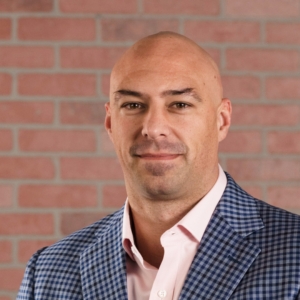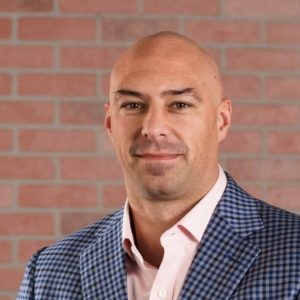Coaches Corner v.12.22.2022

In Coaches Corner v.12.22.2022, Learning Without Scars’ guest writer Alex Kraft pays tribute to football coach Mike Leach.
R.I.P. Mike Leach
College Football coach Mike Leach sadly passed away unexpectedly this week due to a heart attack. While he’s not as widely known as the big names like Nick Saban, Dabo Swinney, Jim Harbaugh, and Lincoln Riley, Coach Leach has been just as influential within the world of college football. Coach Leach was in his third season at Mississippi St., but had successful stints at Washington St. (2012-2019) and Texas Tech (2000-2009). For someone who is a casual football fan, those three programs are not considered traditional “powers”. Leach built his reputation on the ‘Air Raid’ offense which is a pass happy offense predicated on spreading out a defense. There have been 12 games in NCAA history where a QB has thrown for more than 600 yards in a game, SEVEN of those 12 QBs were coached by Mike Leach. Some other career highlights include a record of 18 wins as an unranked team versus a ranked opponent and coaching Washington St. to their only 11-win season in 103 years of playing college football.
At this point, I’m sure you’re wondering, what does Mike Leach have to do with a website that bases curriculum around the heavy equipment industry? To me, there are a few parallels and lessons that can be applied in business from Mike Leach’s coaching career. First, Coach Leach was a strategic thinker. For those that aren’t familiar with the recruiting landscape in college football, Texas Tech, Washington St., and Mississippi St. don’t get ‘5 star’ recruits. Leach was always at a talent disadvantage against conference foes like USC, Texas, Oklahoma, Alabama, LSU, and Georgia. This is what led to the development of the ‘Air Raid’ offense. Leach knew that he couldn’t compete against the other teams playing the same style of football, with lesser talent. Acclaimed writer Micheal Lewis penned a feature for the NY Times on Mike Leach back in 2005, as Texas Tech was gaining notoriety winning games many in the college football world thought impossible. Lewis detailed Leach’s uncommon thinking around offense, comparing football to chess matched with a demolition derby. In the article, Lewis interviewed other football coaches about what they noticed was different around Leach’s approach. Former NFL head coach Jim Schwartz referenced how Leach would space out his offensive linemen, between three and six feet apart, which would result in forcing the other team’s large 330 lb. defensive linemen to travel further distances to reach Texas Tech’s quarterback, giving them more time to throw the ball. Another concept of the ‘Air Raid’ was built around removing two traditional positions, fullback and tight end that seldom touched the ball, and adding two more wide receivers. Every play routinely included five wide receivers running a variety of deep routes, which tired out the defense. Leach’s teams would train hard in the offseason to be the better conditioned team, using more plays to their advantage. The ‘Air Raid’ produced passing yard records almost every year, with different QBs, and point totals not seen before in football. One of my favorite quotes from Lewis’s article is from Coach Leach’s agent, Gary O’Hagan. O’Hagan talks about how much he’s asked about Leach by other coaches and people within the football world: “He makes them nervous; they don’t like coaching against him; they’d rather coach against another version of themselves.”
Another principle of Mike Leach’s offensive system is simplicity. One might assume that an offense known for 50+ point outbursts and routine 500 yard passing games would have a huge playbook that confuses a defense. Actually, Leach’s teams thrived on the opposite. Coach was a huge proponent of having fewer plays and becoming a master at execution. His teams would run the same play from multiple different formations, but the concepts remained the same. This allowed his players to know every intricate detail and execute with precision and speed in the heat of the moment. As football fans we’ve become accustomed to the weekly sight of a football coach holding a giant laminated play sheet that looks like a Waffle House menu on the sidelines. Instead, Coach Leach was known for having a crumpled-up piece of paper in his back pocket that he would mark off his plays for the game in pencil.
If you’re a college football fan, you’ve probably seen some clips of Mike Leach interviews where he banters about which mascot would win in a hypothetical fight or what Halloween candy is overrated. Funny banter aside, Leach’s curiosity was a huge factor in his success. While attending BYU for undergrad, Leach didn’t even play football (he played Rugby)! In the NY Times article, Michael Lewis writes about Coach’s off-season habit of picking a new topic or person and learning as much as possible about it. One year it was Geronimo or Daniel Boone, the next it could be whales or Jackson Pollock the artist. While at Washington State, Leach taught a seminar titled ‘Insurgent Warfare and Football Strategies’. One of the final assignments for the class was for students to each submit 2 football plays for the coach to review. If he liked any of the plays, he would use them in a real game! Could you imagine if Nick Saban were to take play suggestions from the Alabama student body? It’s no surprise that his pursuit of learning complimented his unorthodox approach and helped his teams reach a bowl game in 19 of his 21 head coaching seasons.
How does this apply to the equipment world? First, the art of strategy. CAT dealers are like Alabama, Georgia, and Texas. Their facilities, capital, and the brand name are all the equivalent of ‘5 Star’ recruits at the big-time football programs. Therefore, it doesn’t make much sense for a Komatsu/Deere/Volvo/Sany dealer to compete against CAT using the traditional approach. If CAT dealers have more people/resources and employ an ‘old school’ business approach, competitors could use that to their advantage by embracing technology and offering a more touchless experience. Study your competitor and do the opposite. Don’t fight the battle on the same terms, that’s probably what CAT dealers want everyone to do. Like Leach’s agent says, ‘they’d rather coach against another version of themselves’, yet when you look across the industry there is no effort to carve out a unique value proposition. It’s a copycat game, when the resources aren’t the same. As for simplicity, there are very successful dealers who have a specific identity. For example, a “paving house”, where all the dealer does is focus on road products since it is a very specialized offering. Same with a compact focused dealer (Bobcat/Kubota). The opposite also proves the point, how many dealers are lackluster because they can’t both be a rental and sales dealer, or compact and heavy dealer? If you have a ton of different brands, how can you make sure you have enough trained technicians for all the product lines? Simplicity is key to excellence. Lastly, curiosity can greatly improve company culture and result in massive improvements across the organization. When other dealers are focused on ‘this is how we’ve always done it’, the pursuit of new ideas can be the driving force to taking market share and winning over new customers.
Some people may be surprised how much attention Mike Leach’s death generates, as he never won a national title or an outright conference championship. That is sadly part of the bottom-line results culture we live in today. What stands out just as much as his accomplishments is the lasting impact, he made on some of the game’s most recognizable individuals today. Players and coaches such as Lincoln Riley (USC), Patrick Mahomes, Sonny Dykes (TCU), Josh Heupel (Tennessee), and Kliff Kingsbury all have been influenced by Leach’s system. One of the lasting impacts is the change in the entire Big 12 conference, which went from an old school conservative playing style to a wide-open pass first league now known for points scored. His courage to remain true to himself and not conform, along with his unique style no doubt led to a successful career that garnered great respect from his coaching peers. I for one definitely admired his approach from afar and appreciate his contributions.
Did you enjoy this blog? Read more great blog posts here.
For our course lists, please click here.


